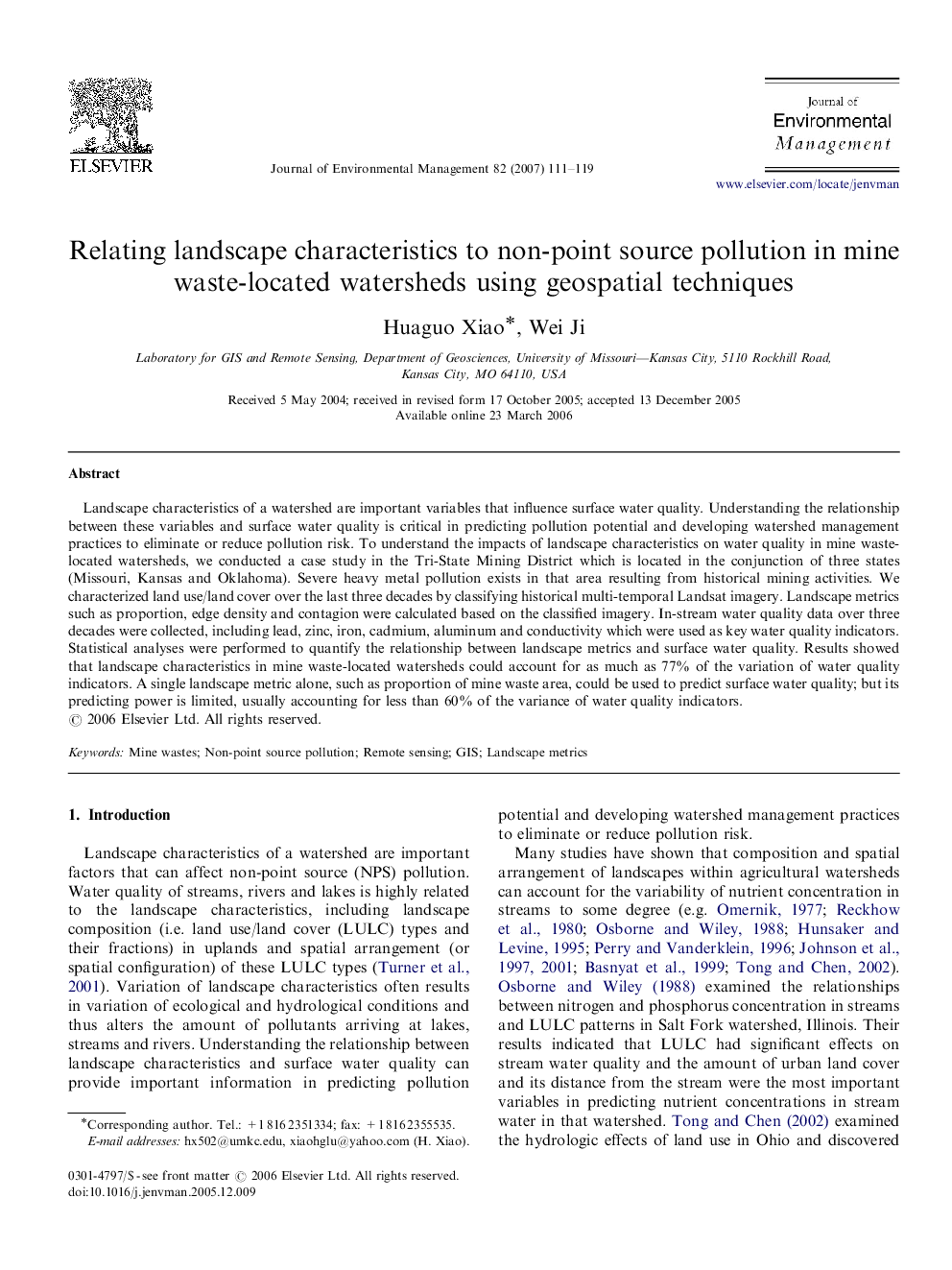| Article ID | Journal | Published Year | Pages | File Type |
|---|---|---|---|---|
| 1057928 | Journal of Environmental Management | 2007 | 9 Pages |
Landscape characteristics of a watershed are important variables that influence surface water quality. Understanding the relationship between these variables and surface water quality is critical in predicting pollution potential and developing watershed management practices to eliminate or reduce pollution risk. To understand the impacts of landscape characteristics on water quality in mine waste-located watersheds, we conducted a case study in the Tri-State Mining District which is located in the conjunction of three states (Missouri, Kansas and Oklahoma). Severe heavy metal pollution exists in that area resulting from historical mining activities. We characterized land use/land cover over the last three decades by classifying historical multi-temporal Landsat imagery. Landscape metrics such as proportion, edge density and contagion were calculated based on the classified imagery. In-stream water quality data over three decades were collected, including lead, zinc, iron, cadmium, aluminum and conductivity which were used as key water quality indicators. Statistical analyses were performed to quantify the relationship between landscape metrics and surface water quality. Results showed that landscape characteristics in mine waste-located watersheds could account for as much as 77% of the variation of water quality indicators. A single landscape metric alone, such as proportion of mine waste area, could be used to predict surface water quality; but its predicting power is limited, usually accounting for less than 60% of the variance of water quality indicators.
